
Sabin Kasparoglu
Postdoctoral Fellow

Maksim Islam
Postdoctoral Fellow
My current research explores aerosol Physico-chemical properties, micro-meteorology, and their influence on atmospheric new particle formations (NPF). I am interested in assessing the feasibility of using aerosol size- and hygroscopicity-resolved turbulent flux measurements and remote sensing techniques to infer the sources/mechanisms of NPF. My research also spans residential biomass burning emissions, quantifying optical properties and radiative forcing impacts of emitted particles, and indoor air pollution assessment and modeling

Lingtong Lai
PhD Student

Alyssa Zimmerman
MS Student
My current research is designed to investigate the relative contribution of ground level and residual-layer new particle formation (NPF) events to ultrafine particle number in Raleigh, NC. The measurement are taken at the Lake Wheeler Road Field site owned by NC State University. I use Scanning Mobility Particle Sizer (SMPS) and Hygroscopic Tandem Differential Mobility Analyzer (HTDMA) techniques for size-selected and hygroscopicity-resolved particle number concentration measurements. SODAR provides data on vertical wind profiles, boundary layer height, and turbulence. Portable Optical Particle Counter (POPS) measures particle number concentration. Hourly data for trace gases, BC, PM2.5, and PM10 are taken from the US EPA ground monitoring stations. I use the Hybrid Single-Particle Lagrangian Integrated Trajectory Model 4 (HYSPLIT_4) for calculating the air mass back trajectories.

Xinyi Ling
MS Student
My research is focused on improving the accuracy of PM2.5 concentration and chemical composition estimates by using novel remote sensing techniques. The remote sensing component of the proposed study is from the NASA Langley HSRL aerosol types retrieved during Discover-AQ campaign. The modeling component is the EPA’s CMAQ Model. The linkage between the remotely sensed and the modeled data is provided by CATCH – a recently developed algorithm that that takes GEOS-Chem model-predicted data on aerosol microphysics and chemical composition and generates aerosol types similar to that retrieved by HSRL. The data from the US EPA ground monitoring stations is used for the performance evaluation in prior and posterior assessments.
My research is supported by NASA Earth and Space Science Fellowship.
I obtained my undergraduate degree in Atmospheric Sciences from Nanjing University in China. Due to the deteriorating air conditions in China, I decided to further my study on the issue of air pollution. Therefore, I came to North Carolina State University to pursue a master’s degree.
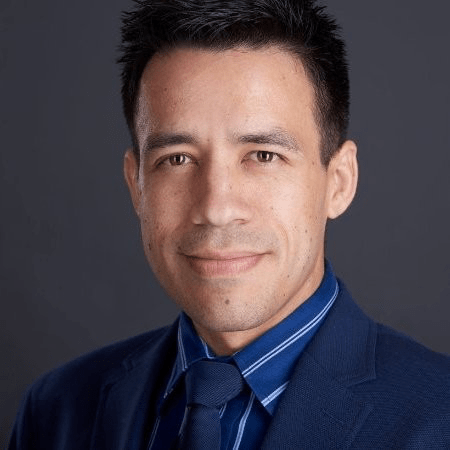
Juan Jaimes Correa
Centro de Investigaciones Oceanograficas e Hidrograficas CIOH, Cartagena, Colombia

Kyle Dawson
Research Scientist, NASA Langley Research Center

Brittany Phillips
Product Design Engineer at Denso Manufacturing
I obtained my undergraduate degree in Electrical Engineering from Western Carolina University in Cullowhee, NC. Currently, I am pursuing a Masters in Atmospheric Science at North Carolina State University. For my current research I am studying the hygroscopicity of sea spray aerosol.
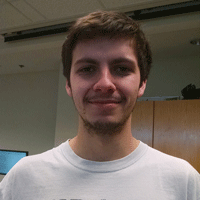
Taylor Royalty
PhD Student at the University of Tennessee
I graduated from Western Carolina University with a B.S. in biology. Presently, I am working towards my master’s in atmospheric science. Questions I am presently interested in include: how do global distributions, taxonomic diversity and nutrient limitation induced stress of phytoplankton impact BVOC emission rates.
My research is supported by NASA Earth and Space Science Fellowship.
I obtained my undergraduate degree in Atmospheric Sciences from Nanjing University in China. Due to the deteriorating air conditions in China, I decided to further my study on the issue of air pollution. Therefore, I came to North Carolina State University to pursue a master’s degree.

Michael Mugrage
Undergraduate Student NC State University
I am a current senior with a major of Meteorology and a minor in Geology. My interests are focused on aerosols and their impacts on convective thunderstorms in the United States. Analyzing the data and finding the connections fascinate me and drives me to continue striving in my research. Outside of class I am an avid weather enthusiast who loves to track thunderstorms and make forecasts. Other things I love to do include racquetball and playing the violin.

Zachary Fair
PhD student at the University of Michigan
I am a senior with a major in meteorology and a minor in physics. My big interest is in radiative transfer; specifically, I find analysis of atmospheric emission/absorption spectra fascinating. Because of this, I would like to focus on radiative transfer and/or particle physics for graduate school. When not driven crazy by my classes, I like to swim, read books, watch movies, and listen to music (complete with a collection of 80 CD’s…and counting).
Zachary graduated from NC State in Spring 2016 and currently enrolled at the University of Michigan’s Ph.D. program for atmospheric science. He is working under the supervision of Dr. Xianglei Huang on remote sensing and radiative transfer in the polar regions.

David Hurley
PhD student at the University of British Columbia

Jon Trueblood
PhD Student at the University of Iowa
Jonathan Trueblood was born in a suburb of St. Louis, Missouri, thereby sealing his fate as a lifelong fan of the St. Louis Cardinals. Growing up, the three most important aspects of Jon’s life were his dog, his baseball team, and the weather. During the Great Flood of 1993, Jon obsessed over the skies, fearing the flood waters would rise to his house, even though he lived nowhere near any of the affected rivers. After graduating from High School, Jon took his love for science and baseball to Northwest Iowa where he studied Physics at Dordt College. Unfortunately, he had to leave his dog in St. Louis. While there, he ran cross country and track, played in the Concert Band, participated in a few productions for the theater department, and cooked every now and then for his 5 other roommates.
Jon obtained his Masters in Atmospheric Science is now studying at North Carolina State University under the guidance of Dr. Meskhidze. His research was focused upon aerosol formation over the pristine ocean regions. The interactions between marine life and the atmosphere play a crucial role in climate regulation.
Jon is now at the University of Iowa working on a PhD in chemistry under Dr. Vicki Grassian. His research is in collaboration with the Center for Aerosol Impacts on Climate and the Environment (CAICE). He is focusing specifically on the heterogeneous chemistry of sea spray aerosols and how surface reactions can alter their composition, morphology, reactivity, and hygroscopicity.
For Clarity: In the above picture, Jon is the one on the left.
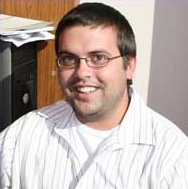
Matthew Johnson
Research Scientist at NASA Ames Research Center
My name is Matthew Johnson and I am a former graduate student of Dr. Nicholas Meskhidze’s research group at North Carolina State University. My PhD research focused on developing a three-dimensional global chemistry transport model which simulates the production of soluble iron in mineral dust during atmospheric transport. After completing my PhD in 2012 I started a Research Scientist position at NASA Ames Research Center. My present research at NASA Ames is focused on using satellite and in situ measurement data to constrain “bottom-up” and “top-down” model simulations of processes such as: the impact of soluble iron deposition on marine biogeochemistry, greenhouse gas emissions from anthropogenic and natural sources, trace gas emission rates and chemical transformation from volcanos and wildfires, and marine organic aerosol emissions and atmospheric aging.
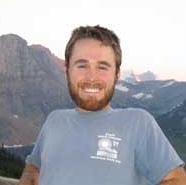
Brett Gantt
Statistician at US Environmental Protection Agency
Brett Gantt is currently a statistician at the Environmental Protection Agency analyzing air quality trends throughout the United States. Brett graduated from the University of North Carolina at Chapel Hill in 2007 with dual Bachelor degrees in Geography and Environmental Science. He attended North Carolina State University as a graduate student beginning in the fall of 2007 working on the quantification of marine isoprene and organic aerosol emissions and their impact on coastal air quality. This research involved the use of laboratory and satellite measurements, and air quality models like the Community Multiscale Air Quality (CMAQ) model. He graduated with a Master of Science in Atmospheric Science in 2009 from North Carolina State University. Brett completed his Ph.D. entitled “Marine Organic Aerosols and Their Implication to Climate” with Dr. Meskhidze in 2012. He lives in Apex, NC and is running for Apex Town Council on November 7th, 2017. Check out his website or Facebook page for more information.
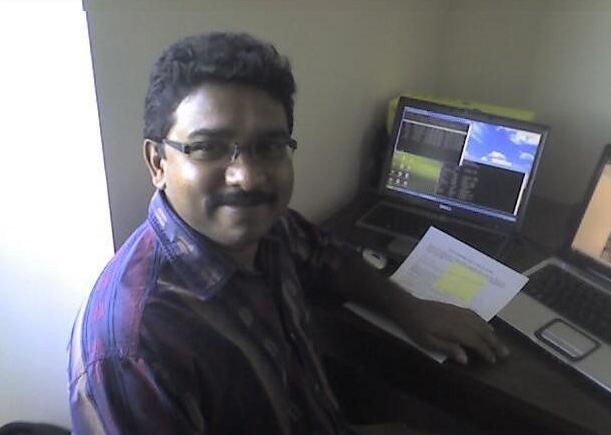
Velayudhan Praju Kiliyanpilakkil
PhD Student at NCSU

Alyssa Sabolis
I obtained my undergraduate degree in meteorology at Florida Institute of Technology in Melbourne, FL. Currently, I am a masters student at North Carolina State University. My primary field of research is trying to understand the role of phytoplankton in the earth’s atmospheric system (i.e. SOA formed by emitted VOC species and possible feedback mechanisms). Specificly, I am looking at different stress factors (light and temperature) and their effect on phytoplankon emissions of VOCs and halogenated compounds. After graduation, I plan to pursure a career in the private consulting industry.
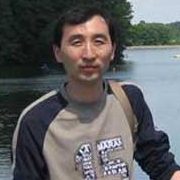
Jun Xu
Chinese Research Academy of Environment Sciences; Beijing, China

Joshua Hemperly
Environmental Services
After graduating from NCSU, Josh worked in URS Corporation’s Morrisville, NC office as an environmental scientist and air quality consultant. During this time Josh provided permitting, compliance, and facility expansion guidance to a wide variety of clients operating in EPA region 4. These services included Potential-to-Emit (PTE) calculations, Air Emissions Inventories (AEIs), Toxic Release Inventories (TRIs), dispersion modeling demonstrations for criteria and toxics pollutants, EPCRA 312/313 reporting, and the Information Collection Request (ICR) in support of the EPA’s Kraft Pulp Mills NSPS Review. His major clients during this time were Department of Defense facilities maintained by the Army, Marine Corp, and Air Force; as well as leaders in the pulp and paper, pharmaceutical, software and technology, tire manufacturing, brick manufacturing, and phosphate mining industries.
Josh is currently an air quality consultant and project manager at Tetra Tech Inc. in Ann Arbor, MI. He manages junior level staff and provides permitting and compliance services to clients operating in various EPA regions. These companies are concentrated in power generation and the automobile industry, with additional clients in food technology, metals mining and refining, aviation, waste incineration, and banking.
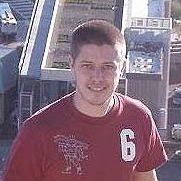
Sean States

Matthew Igel
Assistant Adjunct Professor at the UC, Davis
I was an NSF postdoc working at the University of Miami on theoretical aspects of tropical deep convection. I received my bachelors degrees in meteorology and physics from NC State while working with professor Meskhidze in 2009. I went on to receive a master’s degree in 2011 and a PhD in 2014 at Colorado State. My graduate work focused on the roles of tropical deep convective clouds in climate and weather and the physical scales of these clouds.

Adele Igel
Associate Professor at UC Davis
I have always had an interest in the weather, and it was during an internship at my local NWS forecast office that realized I wanted to pursue meteorology academically. Currently I am studying the modeling of cloud microphysics, from single-moment schemes through to bin schemes. Outside of research, I enjoy hiking and skiing with my husband Matt, as well as cooking and most crafts involving yarn, thread, or fabric.